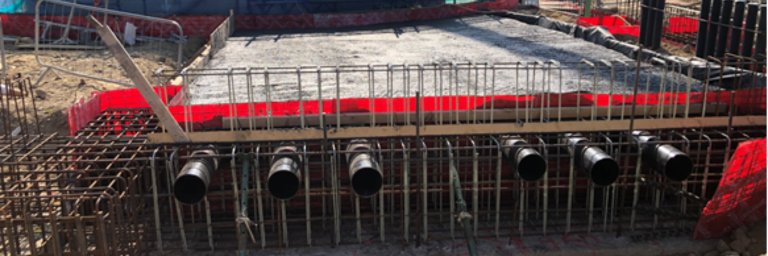Powercrete – Hurst National Grid Sub-Station
Project case study
Product: PowerCrete®
Main contractor: National Grid
Overview: In Spring 2020, National Grid embarked on a transformative seven-year project to rewire South London through deep underground tunnels. This essential initiative ensures Londoners continue to enjoy safe and reliable electricity supplies. Currently, most of South London's electricity is transmitted via underground cables just below the road surface, many of which are nearing the end of their lifespan. By housing new electricity cables in deep underground tunnels, we can significantly reduce construction disruption to traffic, residents, and businesses. Additionally, future repairs and maintenance will cause minimal disturbance, and the tunnels can accommodate additional cables to meet future demand.
To facilitate this project, National Grid is constructing six new shafts and headhouses at key locations along the route to provide access and ventilation for the tunnels. These headhouses will cover the shafts once the tunnels are built. In total, National Grid is creating 32.5 km of 3 m diameter tunnels deep below the road network between Wimbledon and Crayford.
Project Description: HOCHTIEF, in joint venture with Murphy’s, is delivering Package 2 of the London Power Tunnels Phase 2 (LPT2) project. The Tunnel Boring Machine, named Christine, was launched from Hurst in February 2021 and has already completed over 6 km of tunnels.
A key component of this project is the use of PowerCrete®, a high-performance heat-conducting concrete, specified to enhance power delivery and reliability for the new high-voltage cable installation. PowerCrete® is used as a bedding and backfilling material for underground high-voltage cabling. Its special properties result in a highly heat-conductive material, which dissipates the heat generated during electricity transmission quickly, keeping the conductor (cable) temperature lower and increasing the power capability of the cable route.
The compound required to produce PowerCrete® is supplied by Heidelberg Materials in Germany and imported to London. This process involves using vehicles compliant with the Direct Vision Standard (DVS), which measures how much an HGV driver can see directly through their cab windows, ensuring the safety of vulnerable road users such as pedestrians and cyclists.
